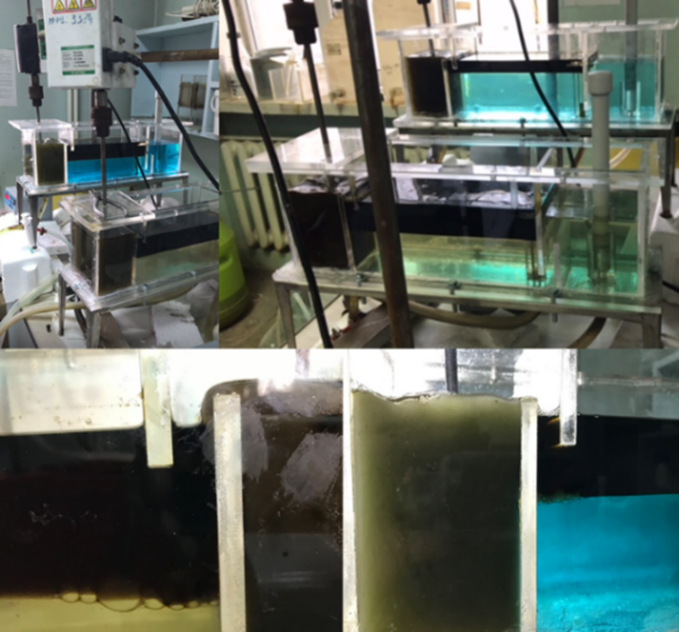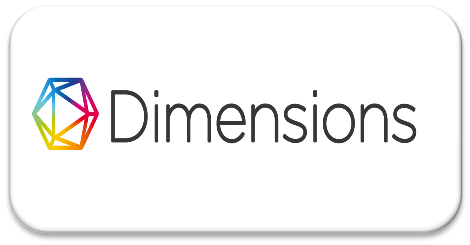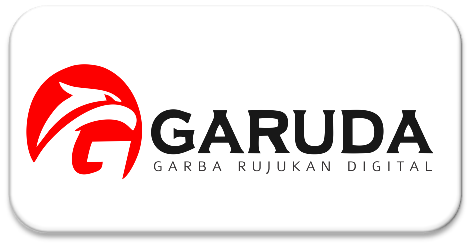The effect of biochemical oxidation on the hydrometallurgical production of copper
Abstract
The article presents the results of the use of the biochemical leaching method for copper-bearing non-commercial ore in a full hydrometallurgical cycle. The object of the study was the average copper-bearing ore of the Satbayev deposit, with an initial copper content of 0.26%. The experimental part of the full hydrometallurgical cycle included percolation leaching, extraction, and re-extraction tests, as well as electrodeposition tests and the production of finished cathode copper. Two variants of percolation leaching were performed as a comparison: a standard method using only sulfuric acid and a preliminary bacterial oxidation method for mineral raw materials with an adapted bacterial strain, Acidithiobacillus ferrooxidans. Percolation leaching experiments showed a significant reduction in sulfuric acid consumption when preliminary bacterial oxidation was used. Upon reaching the level of copper extraction from the ore of 86–87%, the final consumption of sulfuric acid for the standard leaching method was 15.5 kg per ton, while 9.4 kg per ton was required for the biochemical method. The productive solution obtained in the biochemical leaching process showed full suitability for all technological stages of hydrometallurgical copper production.
References
A. Mukhanova, N. Tussupbayev, D. Turysbekov, and A. Yessengaziyev, “Improvement of the selection technology of copper-molybdenum concentrate with the use of modified flotoragents,” Metalurgija, vol. 61, no. 1, pp. 221–224, Jan. 2022.
A. K. Koizhanova, D. R. Magomedov, E. A. Tastanov, B. K. Kenzhaliyev, G. V. Sedelnikova, and A. N. Berkinbayeva, “Intensification of copper leaching from heaps using biological oxidation,” Metalurgija, vol. 61, no. 3–4, pp. 789–792, Jul. 2022. https://doi.org/10.1016/j.mineng.2021.106958
S. Yin et al., “Copper Bioleaching in China: Review and Prospect,” Minerals, vol. 8, no. 2, p. 32, Jan. 2018. https://doi.org/10.3390/min8020032
W. Dresher, “Producing copper Nature’s way: Bioleaching,” Copper Development Association Inc., 2004.
J. C. Gentina and F. Acevedo, “Application of bioleaching to copper mining in Chile,” Electronic Journal of Biotechnology, vol. 16, no. 3, 2013. https://doi.org/10.2225/vol16-issue3-fulltext-12
C. Il Song, C. M. Jo, and H. G. Ri, “Immobilization of Acidithiobacillus ferrooxidans-1333 on the Waste Ore Particles for the Continuous Oxidation of Ferrous Iron,” Iran J Biotechnol, vol. 18, no. 3, pp. 55–61, Sep. 2020. https://doi.org/10.30498/IJB.2020.125528.2224
I. Ňancucheo and D. Barrie Johnson, “Acidophilic algae isolated from mine-impacted environments and their roles in sustaining heterotrophic acidophiles,” Front Microbiol, vol. 3, 2012. https://doi.org/10.3389/fmicb.2012.00325
A. Koizhanova, D. Magomedov, N. Abdyldayev, E. Kamalov, M. Yerdenova, and A. Bakrayeva, “Copper Extraction from Complex Waste Dumps by Biochemical Leaching Method,” Journal of Ecological Engineering, vol. 23, no. 10, pp. 283–290, Oct. 2022. https://doi.org/10.12911/22998993/152342
B. K. Kenzhaliyev, “Innovative technologies providing enhancement of non-ferrous, precious, rare and rare earth metals extraction,” Kompleksnoe Ispolʹzovanie Mineralʹnogo syrʹâ/Complex Use of Mineral Resources/Mineraldik Shikisattardy Keshendi Paidalanu, vol. 310, no. 3, pp. 64–75, Sep. 2019. https://doi.org/10.31643/2019/6445.30
S. M. Kozhakhmetov, S. A. Kvyatkovsky, M. K. Sultanov, Z. K. Tulegenova, and A. S. Semenova, “Processing of oxidized copper ores and sulfide copper concentrates of the Actogay deposit by pyrometallurgical methods,” Kompleksnoe Ispolʹzovanie Mineralʹnogo syrʹâ/Complex Use of Mineral Resources/Mineraldik Shikisattardy Keshendi Paidalanu, vol. 306, no. 3, pp. 54–62, Sep. 2018. https://doi.org/10.31643/2018/6445.17
B. Kenzhaliyev et al., “Modification of Natural Minerals with Technogenic Raw Materials,” Metals (Basel), vol. 12, no. 11, p. 1907, Nov. 2022. https://doi.org/10.3390/met12111907

Copyright (c) 2023 Aigul Koizhanova, David Magomedov, Nurgali Abdyldayev, Maria Yerdenova, Akbota Bakrayeva (Author)

This work is licensed under a Creative Commons Attribution 4.0 International License.






